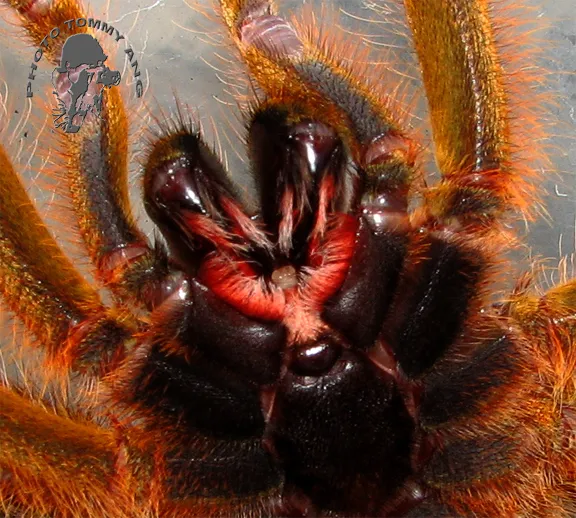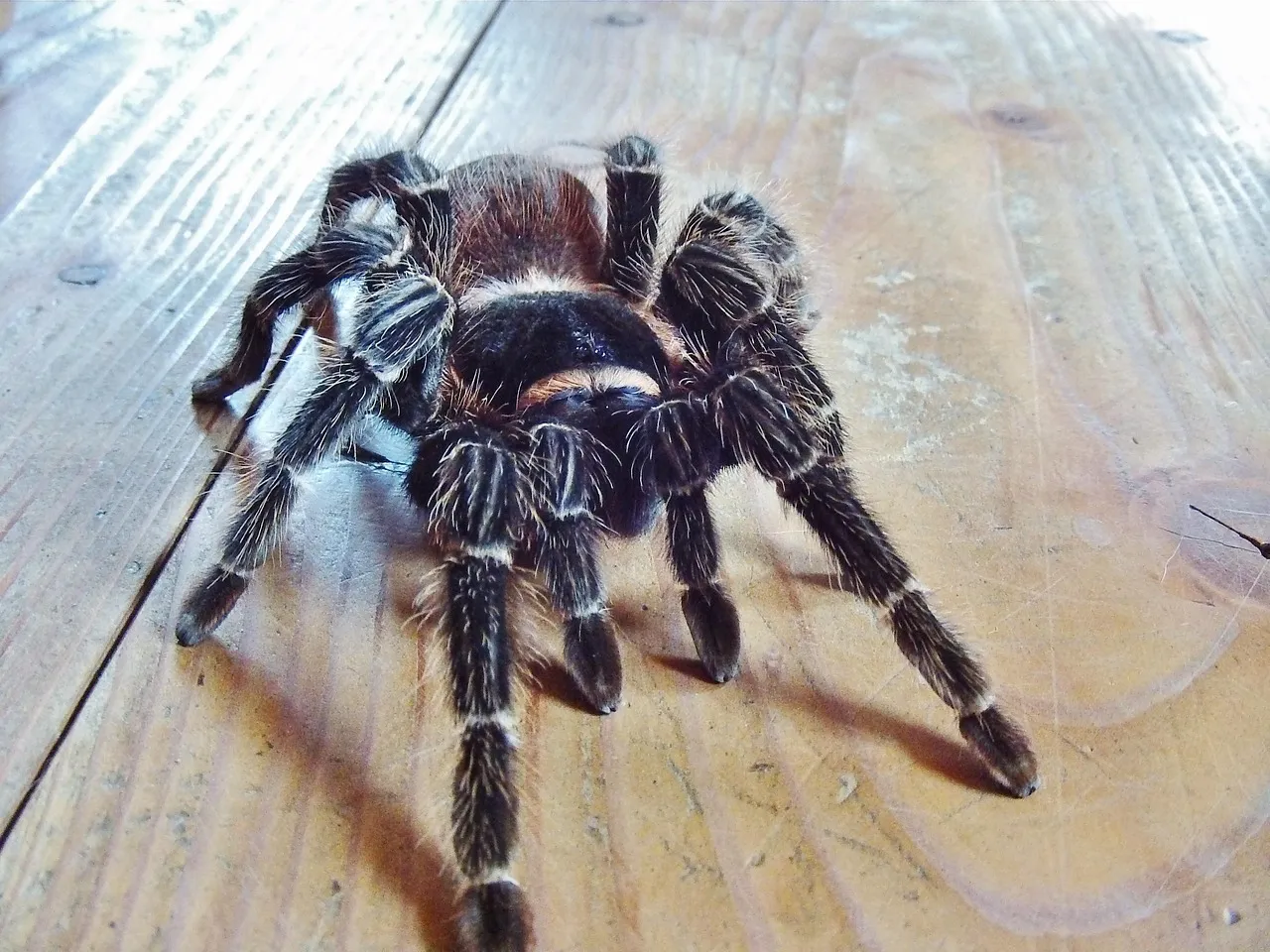Tarantula Care Setting Up Your Tarantula’s Habitat
Caring for a tarantula can be a rewarding experience, offering a unique opportunity to observe these fascinating creatures. The key to a thriving pet tarantula lies in providing an environment that closely mimics their natural habitat. This involves careful consideration of several factors, beginning with the enclosure itself. A well-designed habitat not only ensures the spider’s well-being but also allows you to observe its behavior and enjoy the beauty of your pet. Creating the perfect environment is critical for the health and longevity of your tarantula. It requires understanding their specific needs, which often vary depending on the species. This guide will provide you with all the necessary information to set up and maintain a thriving tarantula habitat, ensuring your pet lives a long and healthy life.
Choosing the Right Enclosure
Selecting the right enclosure is the first and most crucial step in tarantula care. The enclosure should be appropriately sized for the species and the size of the tarantula. It needs to be secure to prevent escapes, and easy to clean and maintain. Glass terrariums or clear plastic enclosures are popular choices because they offer good visibility and are readily available. However, it’s important to ensure adequate ventilation to prevent the buildup of humidity, which can lead to mold growth and other health problems. The enclosure should have a secure lid that the tarantula cannot push open, and it is also important to consider the enclosure’s accessibility for feeding, watering, and general maintenance.
Enclosure Size and Material

The size of the enclosure should correspond to the tarantula’s size and the species’ burrowing or arboreal tendencies. For terrestrial species, the enclosure should be wider than it is tall, providing ample floor space. Arboreal species, on the other hand, need taller enclosures to allow for climbing. A general rule is to provide an enclosure that is at least twice the tarantula’s leg span in width and length. The material of the enclosure can vary, with glass and clear plastic being the most common. Glass offers excellent visibility and is easy to clean, while plastic is often lighter and more durable. Whatever material you choose, make sure it is non-toxic and safe for your tarantula. Ensure the material provides secure containment to prevent escapes and proper ventilation to maintain the ideal environmental conditions.
Substrate Selection and Depth
The substrate is the material used to line the bottom of the enclosure, and it plays a crucial role in the tarantula’s well-being. The substrate helps to maintain humidity, allows for burrowing (for terrestrial species), and provides a naturalistic environment. Suitable substrate options include a mix of coconut fiber, peat moss, and a little bit of vermiculite. The depth of the substrate should be appropriate for the tarantula’s species. Terrestrial species should have several inches of substrate to allow for burrowing, while arboreal species may need less. It is important to replace the substrate periodically to prevent the buildup of waste and mold, and also to maintain the right moisture levels. The substrate must be kept clean and free from any potential hazards that could harm your tarantula.
Temperature and Humidity Control
Maintaining the correct temperature and humidity levels is essential for tarantula care. Tarantulas are ectothermic, meaning they rely on their environment to regulate their body temperature. The ideal temperature range for most species is between 75-85°F (24-29°C). You can use a heat mat or a ceramic heat emitter to provide supplemental heat, but always monitor the temperature with a thermometer. Humidity requirements vary depending on the species, but most tarantulas thrive in a humidity range of 60-80%. Use a hygrometer to measure humidity levels. You can increase humidity by misting the enclosure with water, ensuring proper ventilation to prevent mold growth. The temperature and humidity must be constantly monitored to make sure your tarantula stays healthy and comfortable.
Maintaining Optimal Conditions

Regular maintenance is necessary to keep the enclosure in optimal condition. Spot clean the enclosure regularly, removing any uneaten food or waste. Replace the substrate periodically, typically every 6-12 months, depending on the species and how quickly the substrate becomes soiled. Make sure the water dish is always clean and filled with fresh water. Regularly check the enclosure for any signs of mold or pests, and take immediate action if you find any. It’s also important to provide a few hiding places, such as cork bark or artificial plants, to help the tarantula feel secure. Proper maintenance ensures a healthy, happy, and thriving pet.
Tarantula Care Feeding Your Tarantula
Feeding your tarantula correctly is fundamental to their health and longevity. Understanding the right diet, feeding frequency, and the right food choices is vital. They have specific nutritional requirements, and proper feeding ensures they grow and thrive. Feeding habits vary depending on the age, species, and individual preferences of the tarantula. It is important to observe your tarantula’s behavior and adjust the feeding schedule accordingly. Remember to remove any uneaten food within 24 hours to prevent mold growth and maintain the health of the enclosure. By paying attention to your tarantula’s dietary needs, you can help your pet stay happy and healthy.
Understanding Tarantula Dietary Needs
Tarantulas are primarily insectivores, meaning their diet consists mainly of insects. They require a balanced diet that provides them with the necessary nutrients for growth and energy. Juvenile tarantulas need to eat more frequently than adults because they are growing, and adults can go for long periods without eating. Their nutritional needs depend on their life stage. Protein is essential for growth, and tarantulas also require chitin from the exoskeletons of their prey. The diet must be diverse enough to ensure that the tarantula gets all the necessary vitamins and minerals. Always make sure to offer a variety of foods to ensure a balanced intake. Avoid feeding your tarantula food that is not appropriate or could be harmful.
Appropriate Food Choices

The most suitable foods for tarantulas include crickets, mealworms, roaches, and other insects. The choice of food should be based on the tarantula’s size and the availability of food sources. Crickets and roaches are often preferred because they provide a good source of protein and are relatively easy to obtain. Mealworms can be a convenient food option, but they have a high-fat content, so should be given in moderation. Always ensure that the insects you offer are gut-loaded, which means feeding them nutritious food for at least 24 hours before offering them to your tarantula. Avoid feeding wild-caught insects, as they may carry pesticides or parasites. Feed your tarantula a variety of insects to ensure they get all the required nutrients.
Feeding Frequency and Portion Sizes
Feeding frequency depends on the tarantula’s age and species. Spiderlings and juvenile tarantulas should be fed more frequently, typically 2-3 times a week, because they are still growing. Adult tarantulas can often be fed once a week, or even less frequently. The appropriate portion size depends on the size of the tarantula. You should offer an insect that is about the same size as the tarantula’s abdomen. It is essential not to overfeed the tarantula, as this can lead to health problems. Observe your tarantula’s feeding habits. If they refuse to eat, it could be a sign that they are preparing to molt, or they are not hungry. Adjust the feeding schedule as required.
Watering and Hydration Techniques
Providing fresh water is critical for your tarantula’s hydration. Always have a shallow water dish available, and ensure that it’s kept clean and filled with fresh water. It is important to choose a dish that is not too deep so your tarantula cannot drown. You can also mist the enclosure lightly with water, especially for species that require higher humidity. Misting helps to maintain humidity levels and provide drinking water. During molting, it’s important to increase the humidity to help the tarantula shed its exoskeleton. Always monitor the water level and the humidity levels, and adjust as needed to ensure your tarantula is properly hydrated. Make sure to maintain a clean water source to prevent the growth of harmful bacteria.
Tarantula Care Handling and Interaction

While tarantulas may appear intimidating, understanding how to handle and interact with them safely is important for both you and your pet. Handling a tarantula is often best avoided, as it can cause stress and potentially lead to injuries. However, if handling is necessary, it is important to learn and follow safe handling practices. Recognizing the tarantula’s body language and understanding their stress signals is essential. You must avoid any sudden movements that could startle the tarantula, and prevent any accidental injuries. If you must interact with your tarantula, use a gentle approach to ensure its well-being. By understanding the proper handling techniques, you can minimize the risk to both you and your pet.
Safe Handling Practices
When handling a tarantula, it is very important to be cautious and careful. Always wash your hands thoroughly before and after handling your tarantula. If you need to handle it, do so over a soft surface, like a bed or a carpet, to prevent injury if the tarantula falls. Avoid grabbing the tarantula, as this can cause them stress. Instead, gently encourage them to walk onto your hand. Be patient and move slowly, and always keep your hand close to the ground. Do not handle your tarantula if you are stressed or have any distractions around. A calm and focused approach is key to safe handling. The more you know about your tarantula, the better you can handle and interact with it.
Recognizing Stress Signals
Tarantulas communicate their stress through various behaviors. Recognizing these signs is very important for their health. A tarantula that is stressed might flick hairs off its abdomen, a behavior called ‘urticating.’ They also might raise their front legs in a defensive posture or try to escape. Other signs include rapid movement, hiding, or refusing to eat. If your tarantula displays any of these behaviors, it is best to leave them alone. Provide them with a safe and secure environment and avoid handling them until they appear calm. Understanding these stress signals will help you to make sure your pet is healthy and stress-free.
Avoiding Drops and Injuries

Accidental drops and injuries are a major concern when handling tarantulas. Tarantulas have fragile bodies, and a fall from even a short height can cause severe injuries. To avoid drops, always handle your tarantula close to the ground. Make sure you have a clear path. If the tarantula begins to move too fast, gently place it back into its enclosure. Never handle a tarantula if you are tired or if your hands are slippery. Always supervise children when they are around the tarantula, and teach them how to treat the pet safely. By taking these precautions, you can minimize the risk of injury and keep your tarantula safe and secure.
Observing Without Touching
One of the best ways to enjoy your tarantula is to observe them without touching them. Watching your tarantula in their natural environment can be very entertaining. They will exhibit different behaviors, such as hunting, burrowing, and molting. By observing them, you can learn a lot about their personality and needs. Provide a well-designed enclosure with plenty of hiding places to encourage natural behaviors. Use a bright light to observe them during the day. This allows you to see them without disturbing them. With observation, you can appreciate the beauty and unique characteristics of your tarantula. This also allows you to minimize the risk of causing any unnecessary stress.
Tarantula Care Health and Wellness
Maintaining the health and wellness of your tarantula is critical for its long-term well-being. Being familiar with common health issues, recognizing the signs of illness, and seeking veterinary assistance when necessary are very important. Preventative care is crucial to keep your pet healthy and avoid potential problems. Regularly monitoring your tarantula’s behavior and appearance allows you to detect any early signs of health problems. By taking these proactive steps, you can give your tarantula the chance to live a healthy and happy life. By knowing how to care for your tarantula, you become a responsible pet owner.
Recognizing Common Health Issues

Tarantulas are generally hardy creatures, but they can still be susceptible to certain health issues. Some common problems include parasitic infections, fungal infections, and injuries. Parasitic infections can be caused by mites or other parasites, and they can cause irritation and other health problems. Fungal infections can occur if the enclosure is too humid or unsanitary. Injuries can happen if the tarantula falls or is bitten by prey. It’s important to be aware of these potential issues to identify and address them promptly. Learn to recognize the signs of a healthy tarantula, so you can easily spot changes that might suggest illness.
Identifying Signs of Illness
Identifying the signs of illness early on is very important for your tarantula’s health. Look for changes in your tarantula’s behavior or appearance. Some signs include loss of appetite, lethargy, or a change in posture. Other signs can include discharge from the mouth or other body parts, discoloration, or difficulty molting. If you notice any of these symptoms, it’s important to take immediate action. Separating the sick tarantula from any others could prevent the spread of disease. Observing your tarantula frequently helps you to identify and handle any potential health issues promptly.
Seeking Veterinary Assistance
Not all veterinarians are experienced in treating tarantulas. If you are concerned about your tarantula’s health, it is important to seek help from a veterinarian who is specialized in exotic animals, specifically arachnids. Prepare for your visit by taking notes of the symptoms, the environment, and any recent changes in their behavior. The vet will perform a physical exam and may order some tests to diagnose the problem. Follow the veterinarian’s recommendations carefully, and give any medications as directed. Early intervention is very important for a good recovery. Your veterinarian will make sure you have all the resources you need to help your pet.
Preventative Care Measures
Preventative care is key to maintaining your tarantula’s health. Always keep the enclosure clean and the environment in good condition. Provide the right temperature and humidity levels for the species. Feed your tarantula a balanced diet with appropriate food choices. Avoid handling your tarantula unless absolutely necessary. Regularly inspect your tarantula for any signs of illness or injury. When you quarantine any new tarantulas, monitor them closely for any signs of illness before you introduce them to your collection. Preventative care will reduce the likelihood of health problems and ensure your tarantula has a long and healthy life.
